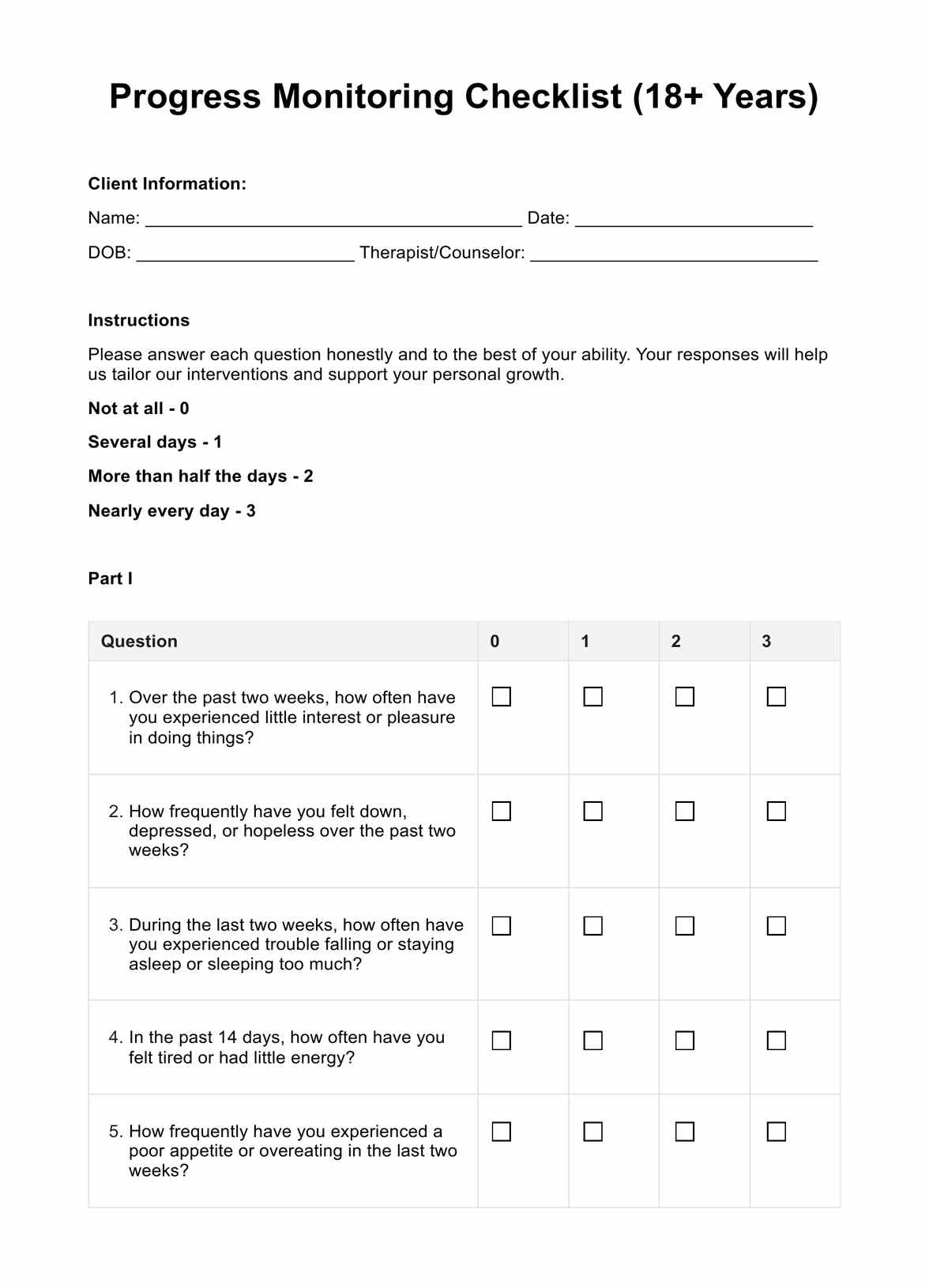The Progress Monitoring Checklist can be a concise and straightforward assessment, often comprising only a few questions or items that can be completed in just a few minutes.

Progress Monitoring Checklist (18+ Years)
Achieve better outcomes with our Progress Monitoring Checklist (18+ Years) & Example resource. Get your free PDF download for streamlined tracking and evaluation.
Use Template
Progress Monitoring Checklist (18+ Years) Template
Commonly asked questions
Interpreting the Progress Monitoring Checklist (18+ Years) findings entails thoroughly analyzing the scores and responses, providing valuable insights into the individual's progress and growth over time.
The Progress Monitoring Checklist (18+ Years) is utilized across healthcare, mental health, education, and research to track and assess individuals' progress and growth effectively.
EHR and practice management software
Get started for free
*No credit card required
Free
$0/usd
Unlimited clients
Telehealth
1GB of storage
Client portal text
Automated billing and online payments











